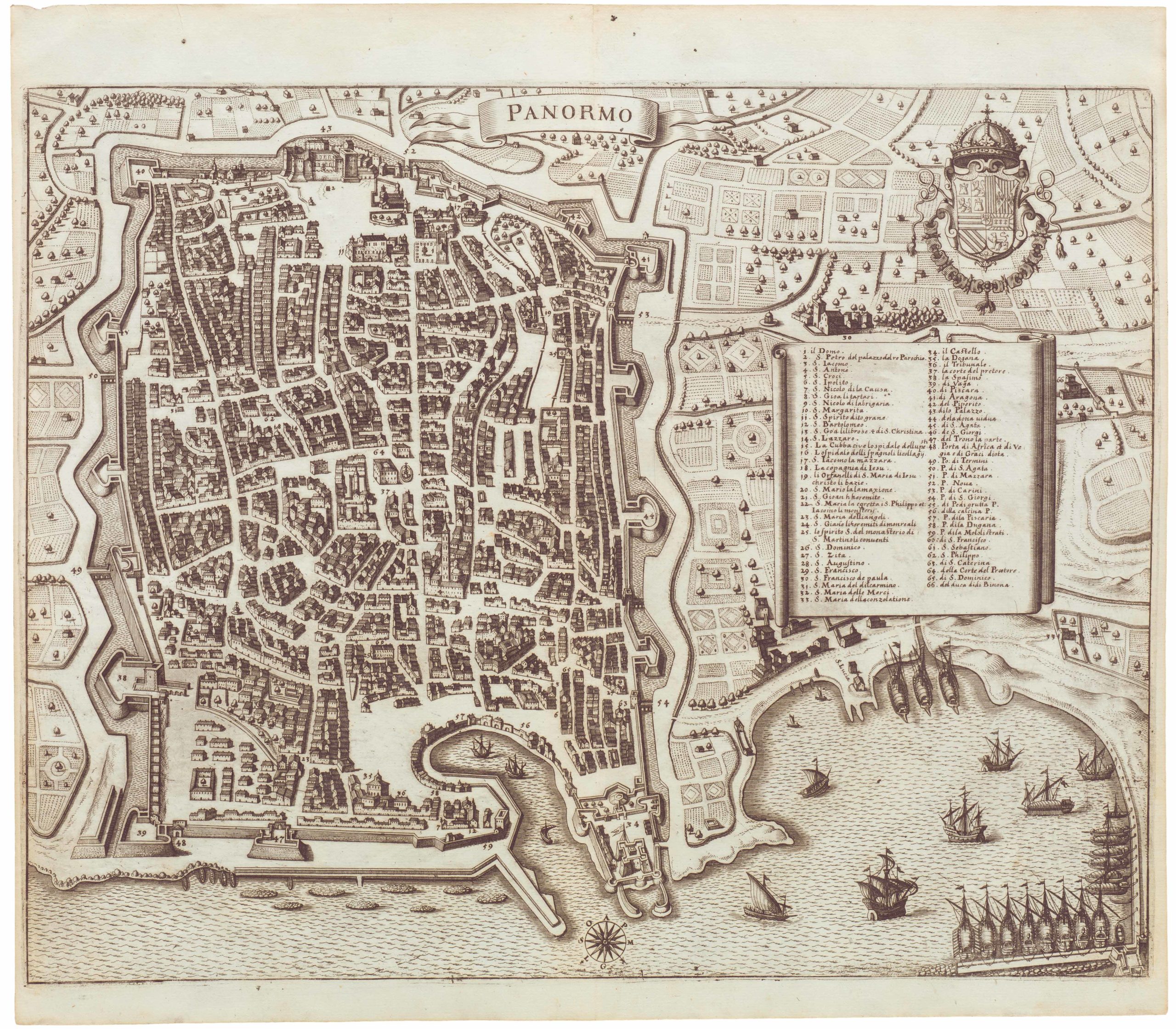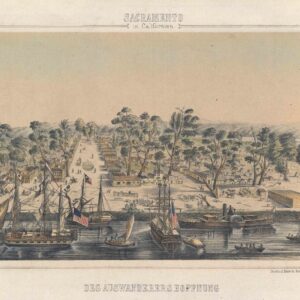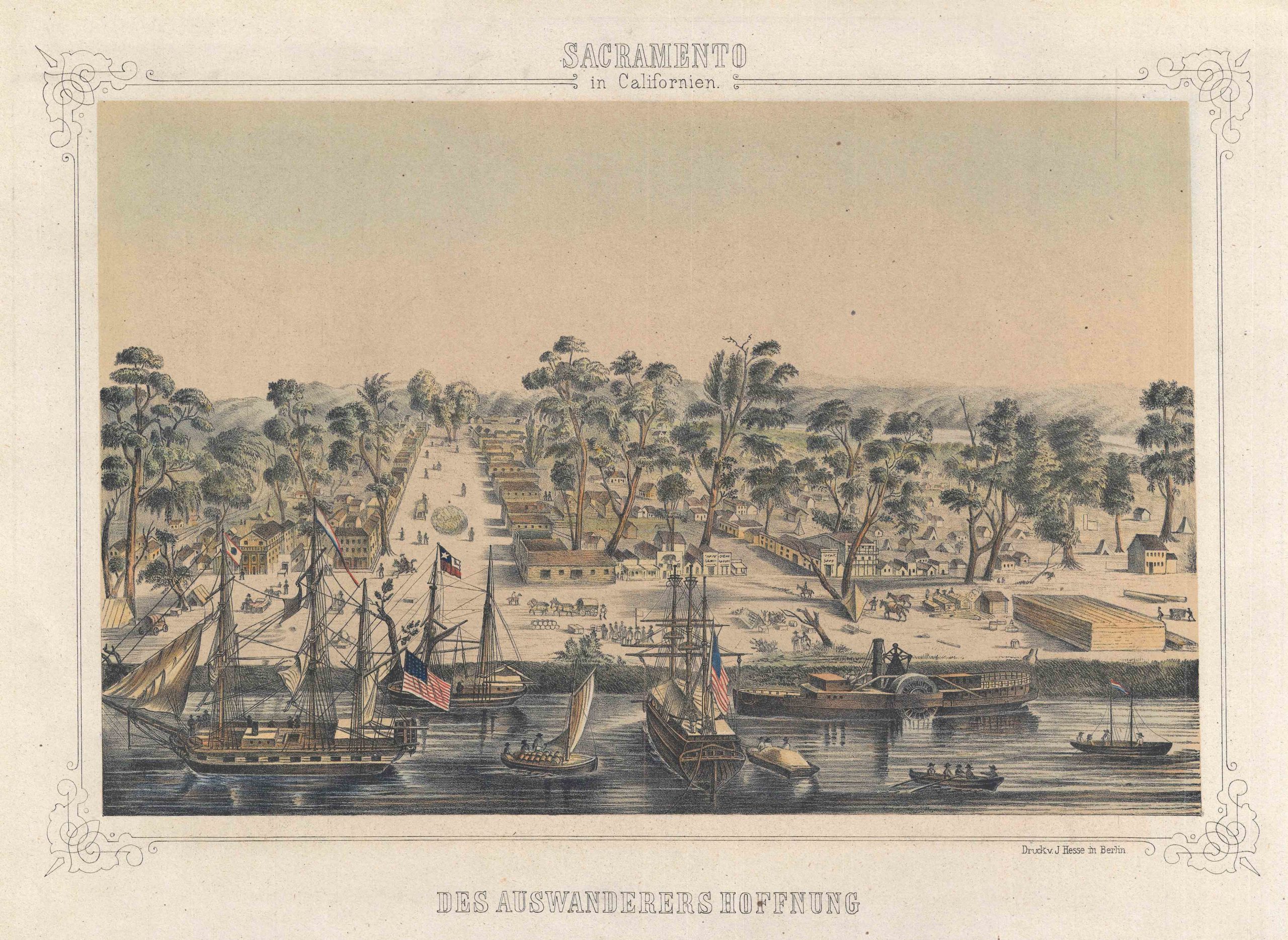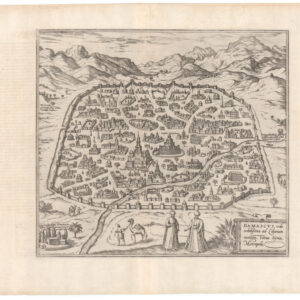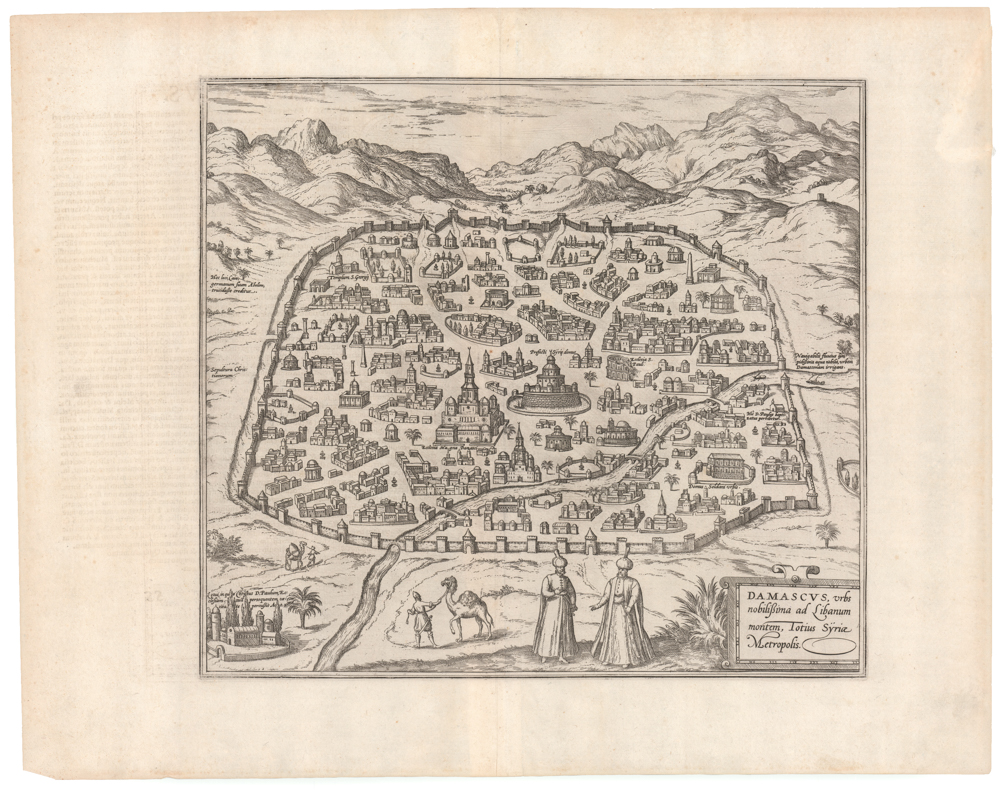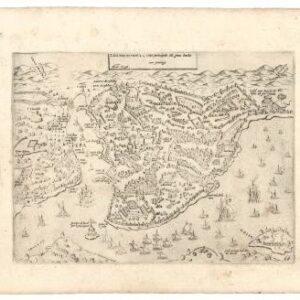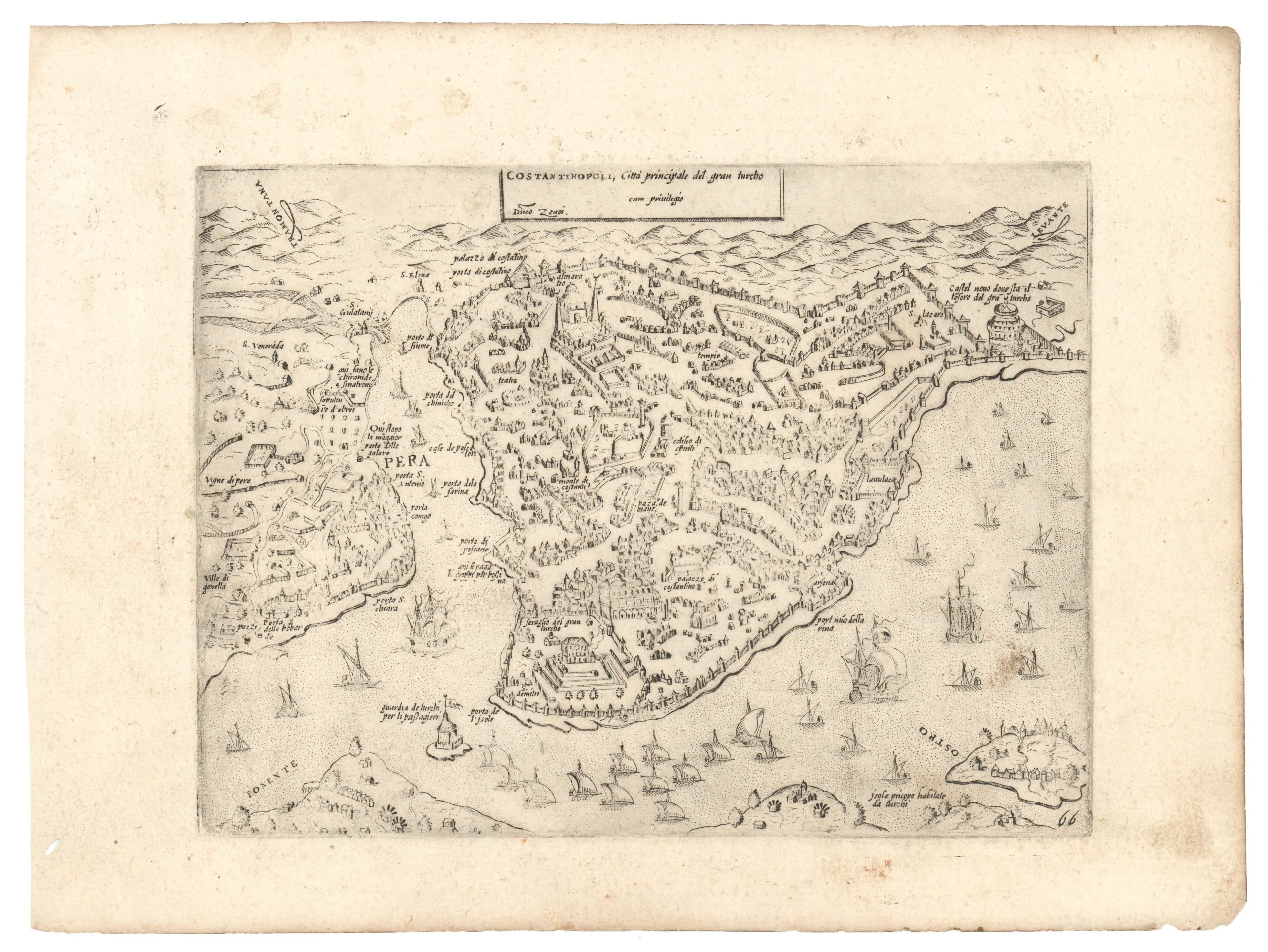Lovely hand-colored Renaissance view of Naples
Haec est nobilis florens illa Neapolis, Campaniae civitas…
Out of stock
Description
This is a bird’s-eye-view of Naples in original hand color with a key to 71 locations, published in the year 1580.
The city is presented from a point to the south in the Bay of Naples. The dominant impression is of a bustling city and trading port with a well-designed layout and impregnable citadel. Naples saw its greatest flowering in the early modern era under Alfonso V of Aragon, who as Alfonso I was also king of Naples and Sicily. Between 1450 and 1550 it grew from 40,000 to 210,000 inhabitants and thereby became Europe’s second-largest city after Paris. Noteworthy here are the three forts: the Castel Nuovo (10) lies directly on the seafront. On the rocky promontory to the left in the district of Santa Lucia, we see the Castel dell’Ovo (12), a harbor fortress from the 9th century. And looking out over the bay from above the city is the 14th century Castle Sant’Elmo (Castel S. Martino, 11), next to the Certosa di San Martino (41).
CARTOUCHE TRANSLATION: This is the notable and flourishing city of Naples in Campania, formerly called Parthenope, after Parthenope the siren, who was buried in this place. As legend relates, the sirens cast themselves into the sea in fury after they had been unable to seduce Odysseus and his companions with their song. Naples, today the residence of illustrious families and most learned men, is distinguished for the wonderful mildness of its air and its delightful location, the magnificence of its churches, private houses and palaces, beautiful tombs of kings, queens and high-ranking persons, and a university with all the faculties.
COMMENTARY BY BRAUN: “The fertile region around Naples […] was the reason that the Romans liked to go to Naples after their work to rest and relax and to seek entertainment. This is where, amongst others, the most excellent poet Virgil lived, who wrote his Georgica book on agriculture here, so Servius says. Livy, Horace, Claudianus, Francesco Petrarch, Lorenzo Valla, Flavio Biondo and many others also lived here. […] The streets are clean and straight. The strongest fortress in Naples is the Castel Nuovo, which may be rightly considered the safest castle in all Europe.”
Cartographer(s):
Georg Braun (1541 – 10 March 1622) was a topo-geographer. From 1572 to 1617 he edited the Civitates orbis terrarum, which contains 546 prospects, bird’s-eye views and maps of cities from all around the world. He was the principal editor of the work, he acquired the tables, hired the artists, and wrote the texts.
The main engraver for volumes I-IV was Frans Hogenberg (1535–1590), a Flemish and German painter, engraver, and mapmaker.
Condition Description
Sufficient margins. Centerfold as issued, split at the top and bottom, not in the image. Small hole in the middle on the right. Stain on the left. Verso: Latin text.
References
Taschen, Braun and Hogenberg, p. 112.

